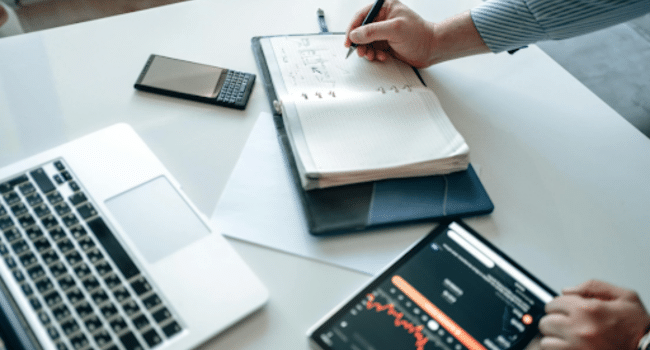Table of Contents
Starting out in forex trading can feel a bit overwhelming. With all the charts, economic calendars, and unfamiliar terms, it’s bound to feel intimidating. But even more so than starting, is transitioning from demo trading to a live account. Demo accounts are a safe haven, but when real money enters the game, it’s a whole new thing. Where there were previously no real losses or stress comes emotions, risk tolerance tests, and how your strategy holds up against it all. Here are four practical and proven strategies that you can use to bridge the gap between demo and live forex trading.
1. Build a Realistic Trading Plan and Stick to It
In demo mode, it’s easy to enter trades just to “see what happens.” But in real-life forex markets, that kind of freedom and trading can burn through your capital in mere hours. What you need is a structure, and it comes in the form of a solid trading plan.
A proper trading plan includes your trading style, entry and exit rules, risk management parameters, and your preferred currency pairs. When you’re in live forex trading, this plan becomes your lifeline. It removes guesswork and keeps your emotions in check. And most importantly, it provides consistency, which is something that separates the pros from the amateurs.
2. Learn and Master Risk Management
The biggest shock when switching to live trading is emotional pressure. A tiny loss that would be nothing in a demo account can suddenly feel like the end of the world when it’s your actual money on the line. This is why risk management is your emotional regulator. Never forget your stop-loss orders, position sizing, and risk-to-reward ratio. Use tools like a risk calculator to determine how much of your capital to allocate, and stick to a minimum of a 1:2 risk/reward ratio. Forex trading is highly volatile and heavily leveraged. It’s both the dream and the nightmare. Without risk management, even a good strategy can fail.
3. Start Small and Scale Gradually
One of the biggest mistakes beginner traders make is jumping into live accounts with large sums of money. This is like training for a walk and signing up for a marathon. Instead, start with a micro account, trade smaller lot sizes, and focus on execution, not profits. This stage is about learning how your psychology reacts to wins and losses. Small amounts keep the emotions manageable while giving you a taste of real market conditions.
4. Keep a Trading Journal
A trading journal might sound boring, but it’s one of the most valuable tools for developing self-awareness and improving your forex trading strategy. Log every trade you make, including your wins, losses, entry/exit reasons, emotional state, and what you could improve. Over time, you will start to see patterns that help you see where you’re making the wrong decisions and how you can eliminate losing moves from your strategy. This information is gold. And it’s the kind of data that separates gamblers from real traders.
Engaging in forex trading with MetaTrader 4 can offer newcomers a powerful and reliable platform as they make the jump from demo to live trading. With MT4, you gain access to advanced charting tools, expert advisors, and real-time execution — resources that help replicate your demo environment even when the stakes are real. This continuity can reduce friction during the transition and make it easier to stick to your proven strategies when emotions rise.
Conclusion: Turning Strategy into Confidence
Crossing the bridge from demo to live forex trading isn’t just a technical shift—it’s a psychological one. It demands discipline, emotional control, and the willingness to learn from every trade. By grounding yourself in a clear trading plan, prioritizing risk management, starting small, and reflecting through a journal, you’re not just preparing to trade—you’re preparing to grow.
The market may be unpredictable, but your approach doesn’t have to be. These four strategies turn fear into focus and uncertainty into opportunity. Embrace the learning curve, trust your system, and remember: progress in forex is built trade by trade.
Image Source: Pexels
